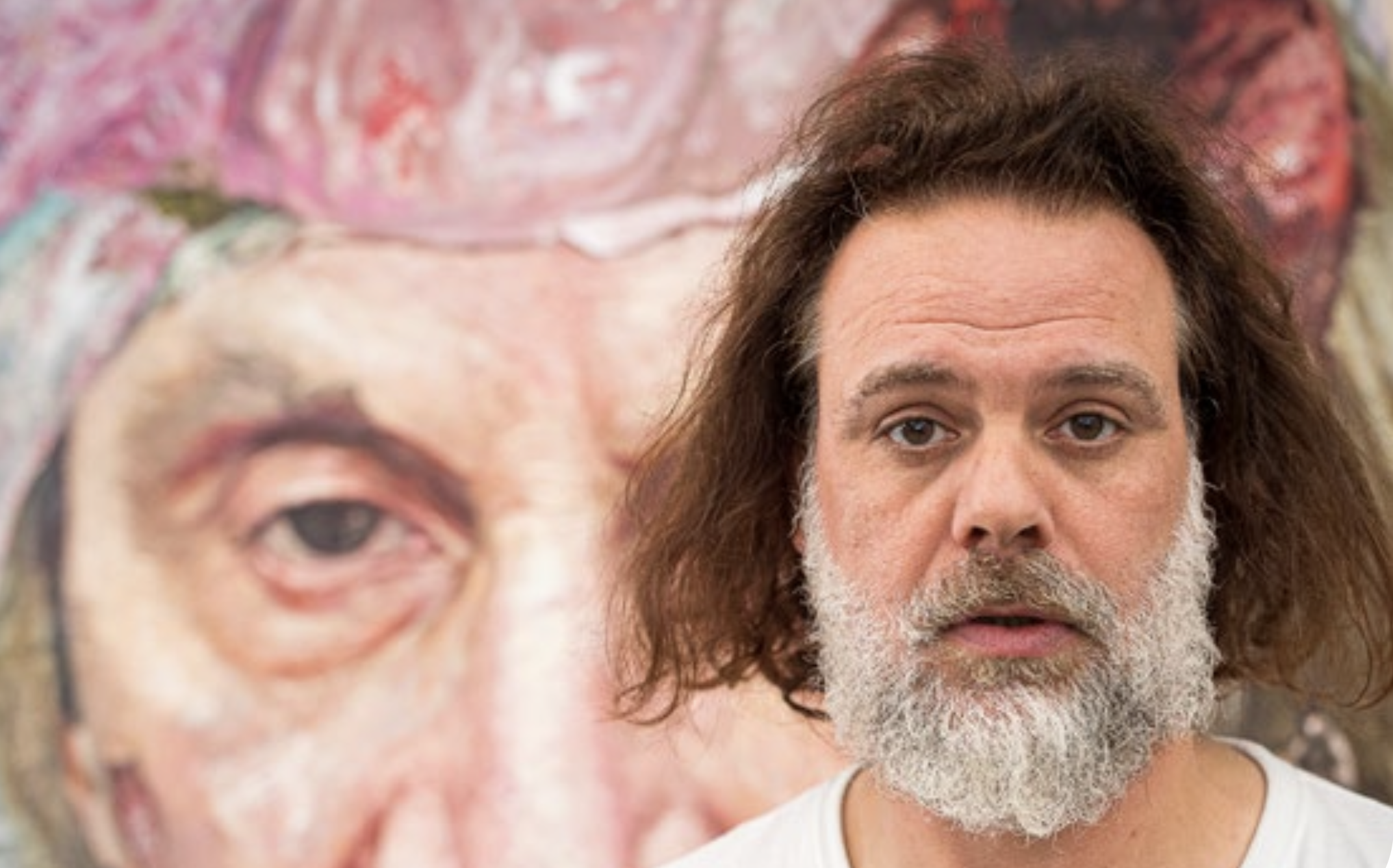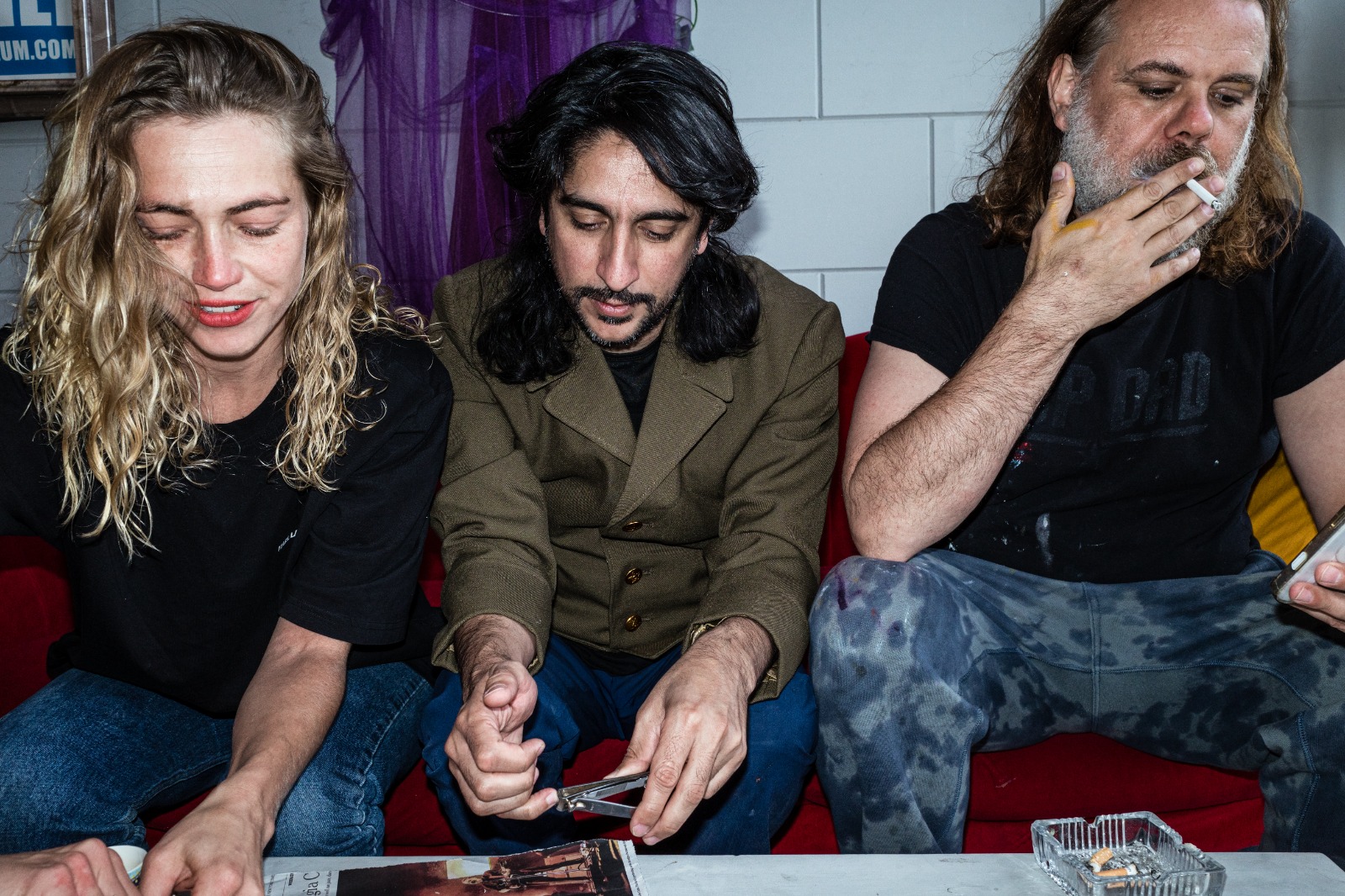Artist Collective Fights “Polite Censorship”
November 9, 2025
The Amsterdam-based artist collective The Unsafe House is taking a stand against what it calls “polite censorship” in the art world. The group recently made headlines for the cancellation of a planned exhibition by the art academy in Leipzig, after anonymous accusations that the collective was neo-fascist. Co-founder and artist Tarik Sadouma refuses to back down in his fight for greater artistic freedom.
By Erick Overveen and Hendriëlle de Groot

In an industrial area of Amsterdam-East, The Unsafe House serves as a creative base for artists, writers, and thinkers who want to work outside the boundaries of institutional safety. The collective was founded in 2021 by artist Tarik Sadouma, together with Ruth Spetter, his creative partner who performs under the name Dr. Spetter, and artist and filmmaker Sina Khani, known for the YouTube series Creeps of the Middle East, which mocks Western stereotypes about artists from the Middle East.
The group’s name is a play on the idea of a “safe space.” It represents an unsafe space where risk, friction, and vulnerability are explored rather than avoided. Guided by this philosophy, The Unsafe House organizes events, debates, and collaborations with international artists. Its projects include films, performances, and podcasts, often inspired by the Dadaist avant-garde, where provocation and play are used as artistic tools. The collective has also worked with the French writer Michel Houellebecq.
One of its most talked-about projects was a livestream event on the eve of the 2024 U.S. presidential election, which combined art, politics, and performance. In their studio on Wenckebachweg, a diverse group of students from the University of Amsterdam and the Gerrit Rietveld Academy gathered with former members of the artist collective KIRAC. They spoke via a large screen with the American writer Curtis Yarvin, a controversial intellectual known as the founder of the so-called Dark Enlightenment, a movement that strongly criticizes democracy, egalitarian ideals, and the power of the modern bureaucratic state.

The Unsafe House had hoped to represent the Netherlands at the Venice Biennale, the prestigious international art exhibition where countries present their national entries. The Dutch selection is made by the Mondriaan Fund, which appoints a curator and artist on behalf of the Ministry of Education, Culture and Science.
“We could have participated if we were selected. But the Netherlands mainly wants something that fits the idea of a safe space. We do not fit into that. We are the opposite, an unsafe house. Even the name makes people nervous. In the Netherlands, a name like that quickly lands you on a blacklist.”
Sadouma believes that, unlike in the United States, there is little room in the Netherlands for voices that do not fit into the “woke” narrative.
“At least in the U.S. there is a counter-movement. Here, everything is left-wing and woke, and subsidies determine everything. If you do not play along, you are made invisible.”
He argues that cultural institutions live in fear of controversy and anything that disturbs their comfort zone.
“Every artist knows which topics make your career: climate, colonialism, gender, identity. I am living proof of what happens when you do not follow that script. Even when I was featured in The Washington Post and Vanity Fair, it made no impression in the Netherlands.”
Sadouma experienced how limited freedom of expression has become in the art world when he was contacted by Ronja Brainstorm, a young Danish art student at the Hochschule für Grafik und Buchkunst in Leipzig. She felt abandoned by her academy while working on her master’s project.
“She came to us because she felt completely unsupported by her school,” says Sina Khani. “She complained about her supervisors, about stupid German teachers, LGBTQ madness, and the wokies. I told her that her life was more interesting than her art because her work felt like simulation, learned behavior. But she herself could serve as a symbol of everything that is going wrong in the world. Break out and show that. If your mentors do not understand what is really happening, if they cannot see the bigger picture, The Unsafe House can give you that mentorship.”
This led to the idea of organizing an event together with The Unsafe House at her academy in Leipzig. The concept was simple. It was meant as an open gathering between students of the academy and The Unsafe House. A moment where you could present something without a political label and without the usual academic framework.
Shortly before the planned event, an open letter appeared at the academy, eleven pages long and signed by seventy students. It urged the school board to cancel the Unsafe Event. “The letter claimed that I was a fascist, and that The Unsafe House had far-right ties. It was full of rumors, assumptions, and misinterpretations. My friendship with Curtis Yarvin, the so-called Dark Enlightener, was mentioned. They also pointed out that one of us wore a Russian emblem during a performance, but it was a Russian military uniform we had found in a thrift store and altered with our own ambiguous symbols. They drew all sorts of conclusions from that. We explained that it was not true, that certain themes were misunderstood as support or collaboration, but it made no difference.”
Soon after, Ronja received an email from the school administration stating that the event could not take place. She was told that, because of the political tensions around her project, she could no longer use her graduation venue. She had to find a location outside the school. But even an alternative space, an old theater in central Leipzig, canceled her event at the last minute. Fearing for her career, Ronja decided to cut all ties with The Unsafe House.
Despite the setback, The Unsafe House refuses to give up. “We are continuing the project. We filmed everything, every step of the process. Now we are making a film about what really happens when art becomes trapped in a left-wing stranglehold. It will serve as a kind of time document. The last word has not been spoken.”